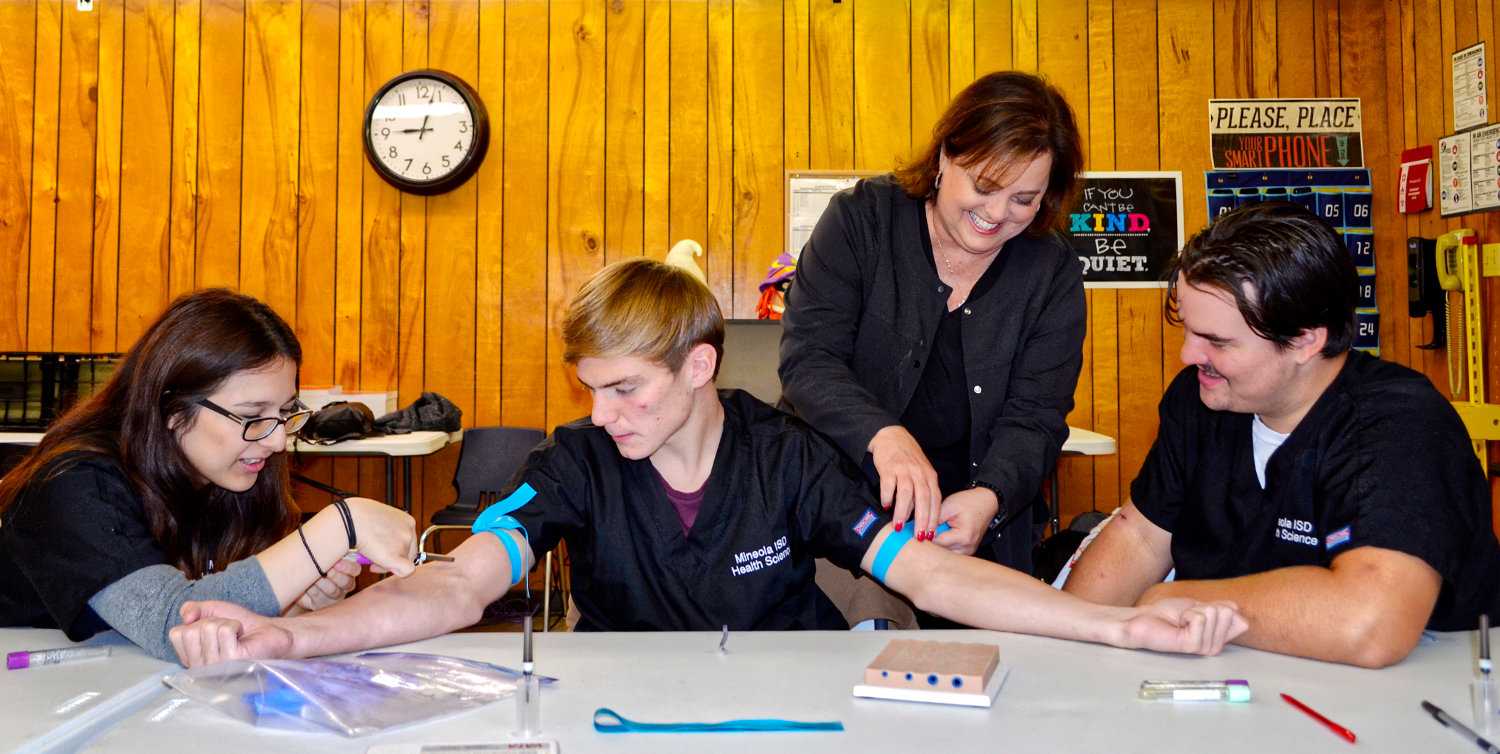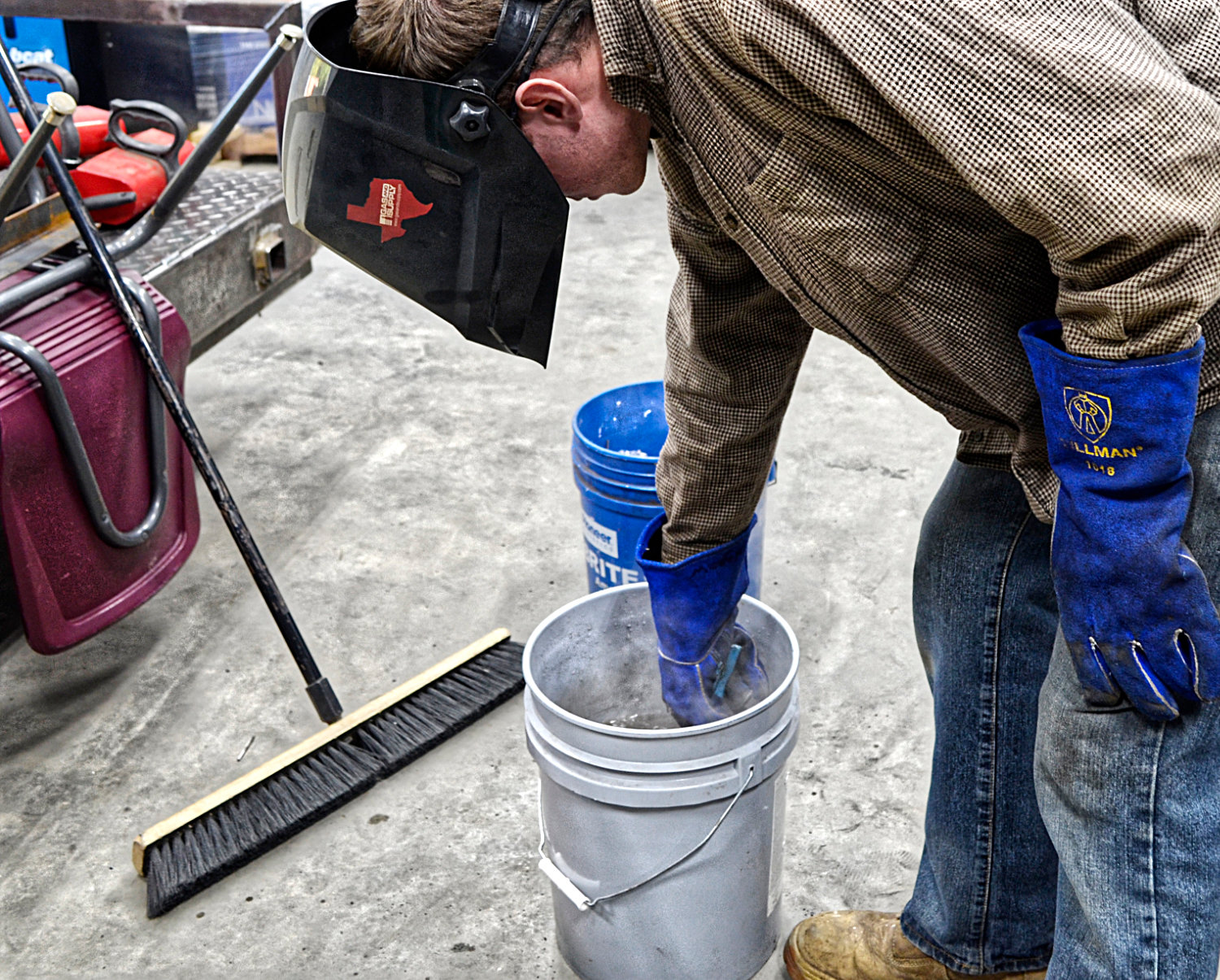Health sciences, welding among MISD offerings in career, tech
news@wood.cm
Mineola students in their junior year of the health science program are learning to feel for veins and the correct positioning of needle insertion.
This item is available in full to subscribers.
Attention subscribers
To continue reading, you will need to either log in to your subscriber account, or purchase a new subscription.
If you are a current print subscriber, you can set up a free website account and connect your subscription to it by clicking here.
If you are a digital subscriber with an active, online-only subscription then you already have an account here. Just reset your password if you've not yet logged in to your account on this new site.
Otherwise, click here to view your options for subscribing.
Please log in to continue |
Health sciences, welding among MISD offerings in career, tech
Mineola students in their junior year of the health science program are learning to feel for veins and the correct positioning of needle insertion.
Students on this path take principles of health science their first year, medical terminology and human development in the second year, health science theory the third year, and practicum in health science II the fourth year.
Through this program, they can get their patient care tech certification, CPR certification, phlebotomy and medical assistant certification and have the opportunity for EKG certification.
Alyssa Lankford, a student in the health science program, is still looking at colleges but hopes to attend the medical program at UT Tyler. Her goal is to become a pediatric nurse.
“I know (this program) will prepare me for college and a medical career,” said Lankford.
Abby Kratzmeyer plans to major in science and nursing at college.
“It’s cool to experience blood drawing and EKG and experience things before other kids my age,” said Kratzmeyer. She feels like the program is ahead of other schools and offers her a head start into her career.
Dawson Elmore plans to become a physical therapy assistant through TJC. He likes that the program offers applicable information for his future.
“Classes here give me a head start in that program. I’m not getting useless information,” said Elmore.
Instructor Cindy Robinson (RN BSN) spoke about how well the students are doing.
“We’ve had a change in rigor, but they are up to the challenge,” said Robinson.
The students in the welding technology pathway are getting hands-on experience that propels them toward a career, also. Leon Watson, welding instructor, has had 70-80 students go straight into the workforce with certification after graduation.
“The opportunity is there. Sixty percent of welders are retiring in 5-10 years, and the industry is behind on HVAC and electricians too,” said Watson.
First year students take principles of agriculture, food and natural resources. Second year students take agriculture mechanics and metal technologies. Third and fourth year students take welding 1 and 2. Students have the opportunity to get certified in OSHA, AutoCAD, and their certification from the American Welding Society.
The welding students learn all types of welding and also go to a yearly welding competition where a team of four students is given raw material to construct an entire trailer in only six hours.
Shelby Turner, instructor in automotive technology, says that he is very grateful for the help and support the program gets from the community. They often get vehicle donations, and students get experience by working on teachers’ and parents’ cars.
Students on the automotive technology pathway take principals of transportation systems their first year, auto basics their second year, auto technology their third year and practicum in transportation systems their fourth year.
These students have the opportunity to get their OSHA certification and their automotive service excellence (ASE) certifications. They can begin testing for the nine ASE certifications available in their sophomore year and can stack several before graduation.
“We have two goals – one is that no kid ever has to take a minimum wage job, and the other is that they have the most up-to-date equipment to learn on,” said Mark Parkerson, director of special programs, about the CTE programs.
Other pathways available at Mineola ISD include education and training, information technology, and ranch and animal management.
All students get 22 hours in basic foundational classes and take CTE pathways as electives.
“The kids are engaged. They see the value and relevance in what they’re getting,” said Parkerson, as he spoke on the desire the students have to learn.









